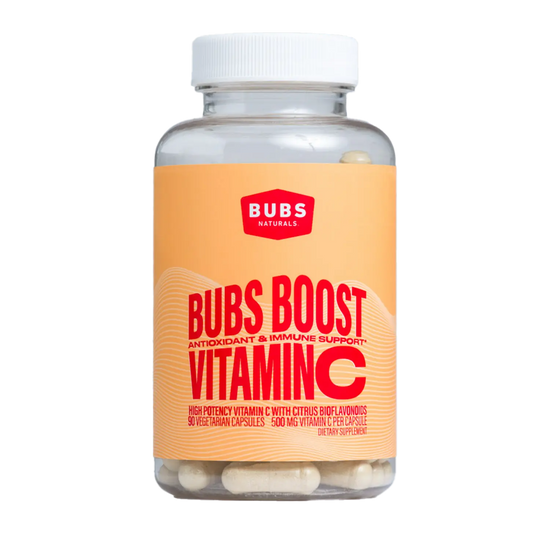Table of Contents
- Introduction
- Understanding Vitamin C: The Basics
- Food Sources of Vitamin C
- Vitamin C Content in Milk: A Closer Look
- The Bottom Line: Is Milk Enough?
- Conclusion
Have you ever poured yourself a glass of milk and wondered, Is this really contributing to my vitamin C intake? While we might think of milk primarily as a source of calcium and protein, its relationship with vitamin C isn't as straightforward as one might hope. The question, Is milk a good source of vitamin C?, opens a discussion about nutritional adequacy, dietary sources, and our overall health.
Vitamin C, also known as ascorbic acid, plays a crucial role in numerous bodily functions, such as collagen synthesis, antioxidant protection, and immune support. Despite its significance, many people are unaware of how best to meet their vitamin C needs. In this blog post, we aim to uncover the truth about milk’s vitamin C content, explore various dietary sources, and suggest ways to ensure you’re getting enough of this essential nutrient.
Together, we’ll dive into the specifics of vitamin C, including its benefits, recommended intake levels, the best food sources, and whether milk can realistically fit into your plan for meeting your vitamin C goals. By the end, you’ll understand why relying solely on milk for vitamin C is not advisable, and you’ll be armed with strategies to enhance your nutrient absorption effectively.
Introduction
While the classic image of a healthy breakfast often includes a glass of milk, the nutritional profile of this beloved beverage reveals a more complex story regarding vitamin C. Research suggests that milk contains only trace amounts of this vital nutrient, falling short when compared to other foods like fruits and vegetables.
Historically, the importance of vitamin C in preventing deficiency diseases like scurvy was well-documented, leading to a greater emphasis on ensuring adequate intake through various dietary sources. For many, the modern diet does not provide enough vitamin C, necessitating a closer look at how best to populate our plates with this powerhouse nutrient.
In this post, we’ll explore the following areas:
- What vitamin C is and its role in the body
- Recommended daily intakes and foods that provide sufficient amounts of vitamin C
- The specific vitamin C content found in various types of milk
- Practical tips for increasing overall vitamin C intake
So, is milk a good source of vitamin C? Let’s explore this topic in-depth.
Understanding Vitamin C: The Basics
Vitamin C is a water-soluble vitamin known for its importance in various bodily functions. As an antioxidant, it plays a significant role in protecting cells from free radical damage, promotes healthy skin via collagen production, and aids in the absorption of non-heme iron (the type of iron found in plant-based foods).
What Does Vitamin C Do?
Here's a breakdown of some essential functions of vitamin C:
- Collagen Synthesis: Critical for skin health, wound healing, and maintaining the integrity of various tissues.
- Antioxidant Defense: Supports the immune system by neutralizing oxidative stress.
- Iron Absorption: Enhances iron absorption from plant sources, vital for preventing iron-deficiency anemia.
- Neurotransmitter Production: Plays a role in synthesizing neurotransmitters that affect mood and cognitive function.
Recommended Intakes of Vitamin C
The recommended dietary allowances (RDAs) for vitamin C vary by age and life stage:
- Adults: 90 mg for men, 75 mg for women
- Pregnant Women: 85 mg
- Breastfeeding Women: 120 mg
- Children and Teens: Range from 15 mg to 75 mg depending on age
Given these requirements, it’s clear that many individuals could benefit from incorporating more vitamin C-rich foods into their diets.
Food Sources of Vitamin C
To answer the question about milk’s role in vitamin C intake, we should compare its content against that of other popular foods.
Top Sources of Vitamin C
- Citrus Fruits: Oranges (70 mg per medium fruit), lemons, and grapefruits.
- Berries: Strawberries (49 mg per ½ cup) and blueberries.
- Vegetables: Red and green bell peppers (up to 95 mg per ½ cup), broccoli (51 mg cooked), and Brussels sprouts (48 mg cooked).
- Other Fruits: Kiwifruit (64 mg per medium fruit) and papaya.
The Good and Bad of Milk
When it comes to milk, studies show that the average content of vitamin C is relatively low:
- Cow’s Milk (Fresh): Approximately 2 mg per cup.
- Human Milk (Fresh): About 4 mg per cup.
- Evaporated Milk: Even lower concentrations, averaging around 2 mg per liter.
Due to these low levels, milk should not be considered a reliable source for meeting the daily vitamin C requirement.
Vitamin C Content in Milk: A Closer Look
While fresh milk can contain small amounts of vitamin C, it is often considered an insignificant source compared to fruits and vegetables. Here's a more detailed breakdown of milk types and their vitamin C content:
- Pasteurized Milk: Generally contains about 2 to 5 mg of vitamin C per cup.
- Evaporated Milk: Approximately 0.6 to 2 mg per cup due to heat processing that may destroy some of the vitamin.
- Powdered Milk: Can retain slightly higher amounts, but still not enough to serve as a primary source.
What Affects Vitamin C in Milk?
Heat treatments and light exposure have been known to decrease the stability of vitamin C in milk. For instance, ultra-high temperature (UHT) pasteurization may result in a loss of around 10% of existing vitamin C content. Additionally, storing milk in clear containers can lead to further degradation of this essential nutrient due to exposure to light.
The Bottom Line: Is Milk Enough?
Considering the minimal vitamin C content in milk, it is clear that we cannot rely on it as a primary source of this essential vitamin. Instead, we should focus on a balanced diet rich in fresh fruits and vegetables to effectively meet our vitamin C needs.
The Importance of a Balanced Diet
A well-rounded diet should prioritize a variety of colorful fruits and vegetables, making it easy to meet vitamin C recommendations. To ensure you’re getting enough, here are some suggestions:
- Start your day with a smoothie loaded with strawberries and citrus fruits.
- Enjoy a side of broccoli or bell peppers with your meals.
- Snack on kiwi or fresh berries to keep your vitamin C levels up throughout the day.
At BUBS Naturals, we believe in supporting a lifestyle of wellness through adventure and clean nutrition, which is why we recommend prioritizing whole foods for your vitamin intake. For those interested in enhancing their wellness journey, consider our Hydrate Electrolytes Collection to aid in hydration and overall well-being during your adventures.
Conclusion
In summary, while milk serves as an excellent source of calcium and protein, it falls short in providing substantial amounts of vitamin C. If you want to ensure you’re meeting your daily vitamin C needs, it’s crucial to incorporate a variety of fruits and vegetables into your diet.
While we love our morning glasses of milk, it shouldn’t be your go-to for vitamin C. Focus instead on vibrant produce that can deliver the nutrient in rich quantities.
Emphasizing nutritional diversity is vital for our overall health and vitality. Together, let’s embrace the power of whole foods and make better dietary choices, which will not only enhance our wellness but also honor the legacy of Glen “BUB” Doherty, whose adventurous spirit inspires us.
FAQ
1. Can I get enough vitamin C from milk alone?
No, milk has negligible amounts of vitamin C, and it's recommended to include various fruits and vegetables in your diet to meet your daily requirements.
2. What are the best food sources of vitamin C?
The best sources include citrus fruits, strawberries, bell peppers, kiwi, and cruciferous vegetables like broccoli.
3. What happens if I don't get enough vitamin C?
Insufficient vitamin C intake can lead to scurvy, characterized by fatigue, connective tissue weakness, and other health complications.
4. Are there any supplements for vitamin C?
Yes, vitamin C is available as a standalone supplement as well as in multivitamins. However, obtaining nutrients from whole foods is generally preferred.
5. How can I enhance my vitamin C absorption?
Pairing vitamin C-rich foods with iron-rich meals can improve iron absorption and maximize your overall nutrient intake.
Written by:
Bubs Naturals

Vitamin C
Starts at $20.00
Shop

